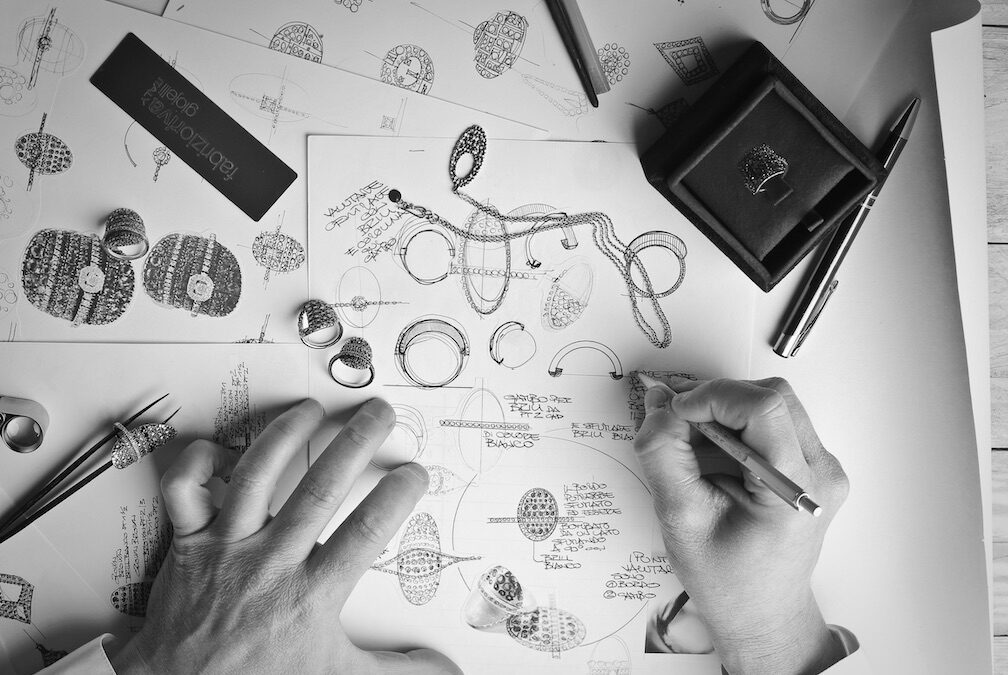By Cara Barilla, Educational Columnist and Journalist
Engagement rings have long been cherished symbols of love and commitment, but they have also become a subject of fascination and speculation due to their increasing prices over the last decade. From the traditional diamond solitaires to intricate designs featuring rare gemstones, engagement rings have witnessed a significant surge in price tags. Let’s explore the factors contributing to this rise and the implications for couples seeking the perfect symbol of their love.
Diamonds have traditionally been the gemstone of choice for engagement rings, and their scarcity plays a significant role in their pricing. As demand for diamonds continues to rise, particularly in emerging markets, the limited supply contributes to increased prices. Factors such as mining regulations, geographical constraints, and complex distribution networks all affect diamond availability and subsequently drive up their cost.
The pursuit of excellence in diamond quality has also contributed to the rise in engagement ring prices. Consumers now have a better understanding of the “Four Cs” – carat weight, color, clarity, and cut – and are willing to invest in higher-quality stones. With increased demand for diamonds with exceptional clarity, color, and brilliance, the cost of sourcing such premium diamonds has naturally increased.
Alongside traditional diamond engagement rings, alternative gemstones and unique designs have gained popularity. Gemstones like sapphires, emeralds, and rubies offer vibrant colors and distinctive appearances, attracting couples seeking a more personalized and non-traditional choice. However, the rarity of these gemstones, especially in high-quality grades, has contributed to their increased prices as well.
The price of precious metals, such as gold and platinum, has experienced fluctuations over the years. These metals are commonly used in engagement ring settings due to their durability and beauty. As the prices of these metals rise and fall in response to various economic factors, their impact on the overall cost of engagement rings becomes significant.
Intricate and unique engagement ring designs, often incorporating intricate details and handcrafted elements, have gained popularity. The labor-intensive nature of these designs, combined with the expertise and skill of artisans, adds to the overall cost of the ring. Customization and personalized touches are valued by couples, resulting in higher price points for their desired ring styles.
Economic conditions also play a role in the rising prices of engagement rings. Inflation and fluctuations in currency values affect the overall cost of raw materials, manufacturing, and distribution processes. Global economic trends can influence pricing strategies across the jewelry industry, contributing to increased engagement ring prices.
While the rising prices of engagement rings may present challenges for some couples, it’s important to remember that the significance of these rings lies in the love and commitment they represent. It’s crucial to set realistic expectations and consider individual financial circumstances when making a purchase. Couples can explore a range of options, such as opting for smaller diamonds, alternative gemstones, or different metals, to find a balance between budget and personal preferences.
The rise in engagement ring prices over the last 10 years is a reflection of various factors, including the rarity of diamonds, shifting consumer preferences, quality standards, precious metal costs, design and craftsmanship, and economic factors. As couples navigate the process of selecting an engagement ring, it’s important to approach the decision with informed awareness and an understanding of the dynamics shaping the market. Ultimately, the true value of an engagement ring lies in the love and commitment it represents, and finding a ring that embodies that sentiment is a personal and meaningful journey.






